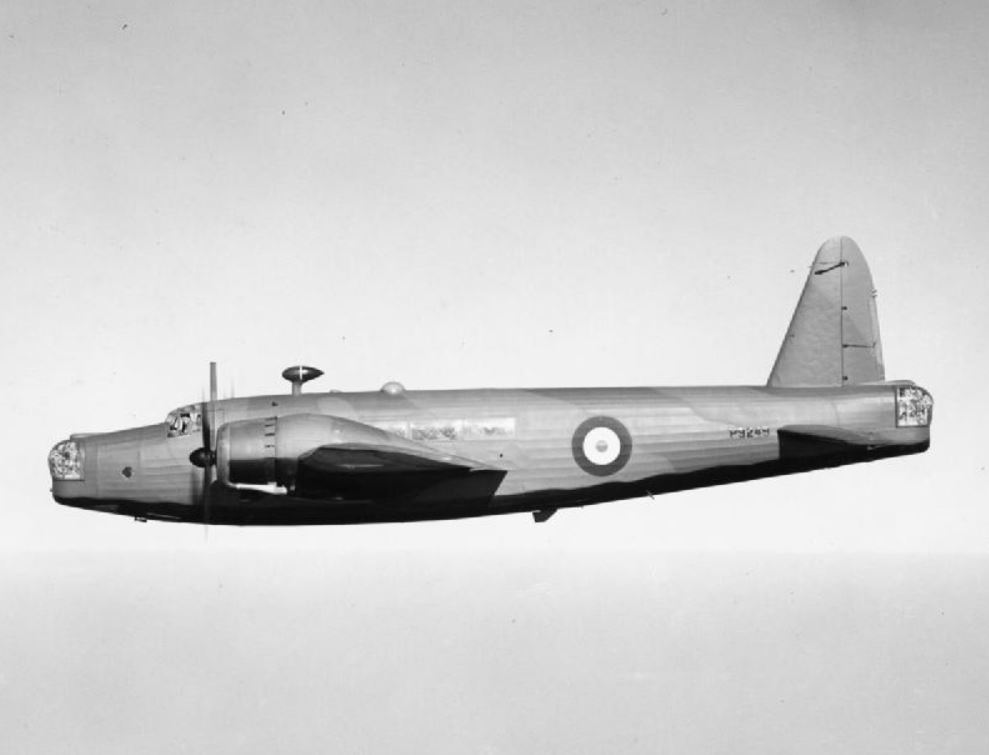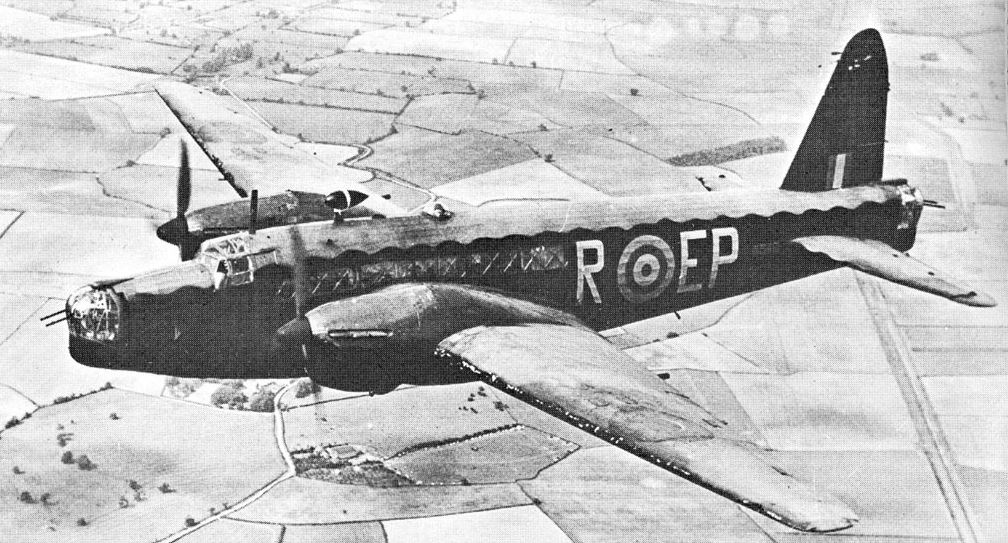Vickers Wellington
From Our Contribution
Contents
Remarks
Early design work began in late 1932, with the first prototype flying in 1936. By 1936, the need for a large bomber force, which would form the spearhead of British offensive power, had been recognised, resulting in the creation of a new command organisation within the RAF, Bomber Command. Early prototypes provided for a crew of four with capacity for a fifth crew member. Production contracts were awarded in late 1936, with 180 ordered. The first production aircraft flew on 23 Dec 1937. In Oct 1937 orders for a further 264 Wellingtons was placed with various manufacturers, and Vickers set a target of completing one aircraft per day. Peak construction was achieved in 1942 with monthly rates of 70, 130, and 102 at the three plants involved in their construction. The last aircraft was completed on 13 Oct 1945.
The Wellington Mk II was designed in early 1938, to be powered by the Merlin engine in place of the Pegasus XVIII. I had a higher cruising and top speeds, increased carrying capacity or greater range, and a raised ceiling. Featuring a geodesic design the frame gave greater strength for reduced weight.
At the outbreak of war the plane was flown by Nos 9; 37; 38; 99; 115; and 149 Squadrons in addition to two reserve squadrons, Nos 214 and 215. Wellingtons were used in the first bombing mission over Germany, and the first aircraft lost were Wellingtons. The aircraft was unable to protect itself effectively in daylight battles having no defence to attack on the flanks or from above. It was switched to night operations on 25 Aug 1940. Wellingtons were used by Coastal Command to seek out U Boats and to remotely detonate enemy mines. A few Wellingtons participated in 1944 Greek Civil War and remained active in the Middle East and Far East until the war's conclusion.
General characteristics
- Crew: six
- Length: 19.69 m
- Wingspan: 26.26 m
- Height: 5.31 m
- Empty weight: 8,417 kg
- Max takeoff weight: 12,927 kg
- Powerplant: 2 x Bristol Pegasus Mk XVIII radial engines
- Maximum speed: 378 km/hr at 4,700 m
- Range: 4,100 km
- Service ceiling: 5,500 m
- Armament
- Guns: 6 or 8 .303 Browning machine guns
- 2 in nose turret
- 2 in tail turret
- 2 in waist position
- Bombs: 2,000 kg
Crew members
No. 40 Squadron RAF
- Maxwell Wellman Marsh KIA 7 Jul 1944
No. 101 Squadron RAF
- Raymond Edward Norton Butcher KIA 21 Sep 1942
No. 458 Squadron RAAF
- Gerard Henzell Straughan Hemy Dec 1943 - Dec 1944
No. 460 Squadron RAAF
- Clifford Stanley Douglas 12 Mar - 1 Jun 1942 - POW 1 Jun 1942

